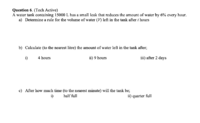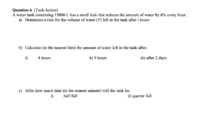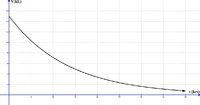Hi! For my school assignment I received this worded question using exponential graphs, but I am having some trouble with the first part about finding the rule for it.
Since it is an exponential graph, I determined the rule used would be y=a^-x, and then tried to go from there. Since 15000 is the initial value I placed that in the rule, and I also substituted the point (0,15000) since I know that will be on the graph. I think I have done this right but I ended up with an extremely long answer of
V = 15000 * (2.8045882272237)^-0.06*x
Does this seem correct to anyone? The only reason I am thrown off is because of the length of the base of -0.06x; because I have never seen an equation with a number with so many significant figures... especially not on our usual school assignments. I tried rounding it, but that changes the answer, so I'm stuck with this super long answer that I'm not even sure is right...
Does anyone think this is completely wrong? Or is the very long answer right, and I am just overthinking it?
Thank you so much for any help you are able to provide
(I've attached the question below)
Since it is an exponential graph, I determined the rule used would be y=a^-x, and then tried to go from there. Since 15000 is the initial value I placed that in the rule, and I also substituted the point (0,15000) since I know that will be on the graph. I think I have done this right but I ended up with an extremely long answer of
V = 15000 * (2.8045882272237)^-0.06*x
Does this seem correct to anyone? The only reason I am thrown off is because of the length of the base of -0.06x; because I have never seen an equation with a number with so many significant figures... especially not on our usual school assignments. I tried rounding it, but that changes the answer, so I'm stuck with this super long answer that I'm not even sure is right...
Does anyone think this is completely wrong? Or is the very long answer right, and I am just overthinking it?
Thank you so much for any help you are able to provide
(I've attached the question below)



